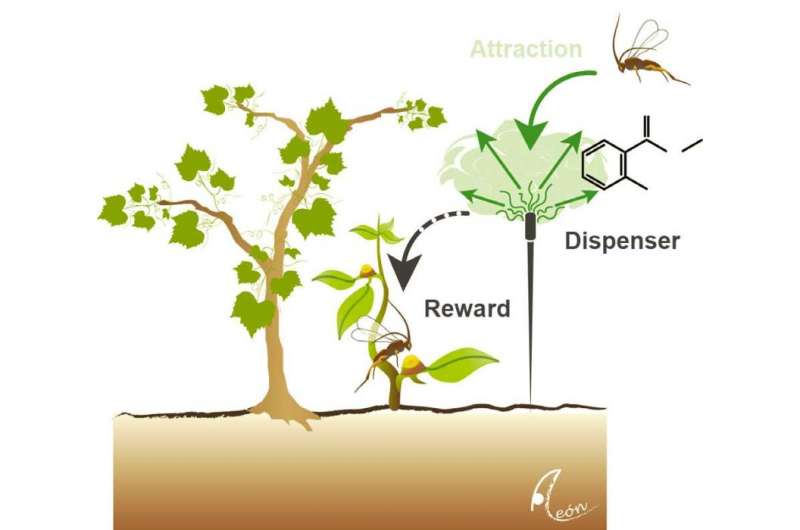Wild plants call to carnivores to get rid of pests—could crops do the same?

Rose gardeners have a lot to say about aphids. Some may advise insecticides as a way to manage an infestation, but others will swear by live ladybugs (natural predators of aphids). The latter is more environmental friendly, and once the ladybugs run out of food to eat, they move on.
While this strategy may work in someone's backyard, it's not an option on a large farm. In an October 4 Trends in Plant Science Opinion paper, agricultural researchers in Sweden and Mexico argue that one way around the scalability problem is to bring back the odors and nectars found in wild plants that attract pest-eating predators. This could be done either through breeding programs or by using artificial devices.
"Wild plants commonly emit natural odors when they are damaged that attract natural enemies of pest insects—even as humans we smell it when our neighbour is mowing the lawn - odors can carry very precise information," says co-author Martin Heil of CINVESTAV-Irapuato in Mexico. "Agriculture has bred such defenses out of crops, and since these odors have no negative effects on human consumers, we want to replace what the plant would already be doing."
It's also not unusual for wild plants to produce nectar on their leaves to feed carnivores. While leaf-eating caterpillars or beetles are munching away on plant matter, predatory ants or wasps have a sugary substance to drink and a well-stocked spot to lay their eggs.
Heil and others theorize that the reason these rather helpful traits no longer exist in crops is because plant breeders and decision makers couldn't tell the difference between helpful insects and pests. Only in the past 30 years has it been recognized that plants use odors to communicate to one another and to other species. Such defenses involve multiple genes, however, and it won't be easy to simply bring them back.

One faster alternative would be to plant crops alongside other species that both attract carnivores and repel pests. The downside is that intercropping requires more work during harvesting and its success rate isn't 100%. Another option is to create mechanical dispensers that could release carnivore-calling odors and fungicidal nectar, which is something Heil and his team are now developing and testing.
"New regulations and changing consumer demands are gradually improving the prospects for more sustainable agriculture," Heil says. "This provides a ready market if we can give crops back their own immune system, either by breeding, genetic engineering, or replacing the traits artificially."
More information: Trends in Plant Science, Stenberg et al.: "Optimizing Crops for Biocontrol of Pests and Disease" dx.doi.org/10.1016/j.tplants.2015.08.007
Journal information: Trends in Plant Science
Provided by Cell Press


















